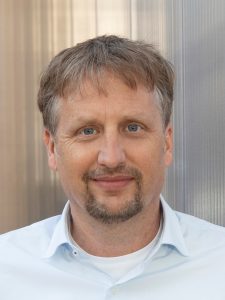Solid-solid interfaces are of central importance for a wide range of energy conversion applications ranging from solar energy harvesting over solid-state lighting devices, high-temperature electrolysis and fuel cells to solid-state batteries.
As semiconductor heterojunctions they control the dissociation and recombination of opposite polarity charge carriers. As electrode/ solid-electrolyte interfaces they separate electronic and ionic charge transport. They can be used to define nanometer-sized resonant cavities to tune localized electronic (excitonic, polaronic, plasmonic etc.) excitation and relaxation for light harvesting and emission, and they govern the interplay of these excitations with the dissipative environment and nanoscale electromagnetic fields. It is only in the past few years that novel nanofabrication methods have advanced to the level that solid interfaces can be designed at the atomic scale to optimally drive these e-conversion processes.
Novel growth, templating and self-assembly techniques allow to create interfacial architectures that are optimally adapted to finite diffusion lengths, that tailor excitation energies and lifetimes through quantization, or that induce desirable field amplifications or potential gradients. However, such targeted sculpting requires an atomic-scale understanding of structure-property relationships between the corresponding elementary excitations and key e-conversion processes. This renders solid-solid interfaces also most challenging, since they are, by definition, buried and hence less accessible to direct interrogation that could deliver correlated space- and time-resolved information.
Furthermore, solid-solid interfaces are frequently working interfaces that undergo significant morphological and/or chemical changes under device operation – either as unwanted side products leading to degradation or as a result of ionic migration that constitutes their very functionality. Thereby, the challenge is not only to engineer interfacial architectures but to either preserve them or understand operando changes well enough to control or even exploit them for targeted applications.
Area Coordinators


PIs of the Research Area


























